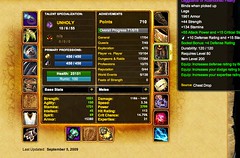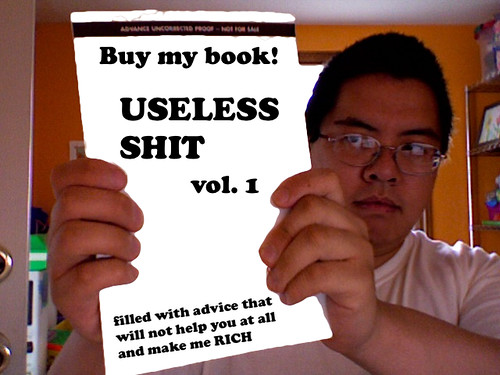 Ever heard of the marketing problem known as museum syndrome? Probably not since I just made that up. Museum syndrome is simply this: an individual masterpiece in an art museum is a wonder to behold. When you place a masterpiece against a wall with dozens of other masterpieces, your ability to appreciate that one piece becomes more difficult. Consumers have a finite amount of attention they can spend at any one time and place, and if you’re fortunate enough to be the recipient of that attention (fleeting thought it is), you need to help the consumer appreciate what’s in front of them.
Ever heard of the marketing problem known as museum syndrome? Probably not since I just made that up. Museum syndrome is simply this: an individual masterpiece in an art museum is a wonder to behold. When you place a masterpiece against a wall with dozens of other masterpieces, your ability to appreciate that one piece becomes more difficult. Consumers have a finite amount of attention they can spend at any one time and place, and if you’re fortunate enough to be the recipient of that attention (fleeting thought it is), you need to help the consumer appreciate what’s in front of them.
One of the biggest mistakes marketers make – myself included – is the error of putting a buffet in front of someone who wants a snack. The sheer amount of choice can be staggering, but more importantly, every offering is diminished, no matter how good it is. Every offering is diminished because that finite amount of time and attention is divided among the number of offerings.
That’s why sites like Woot.com, for example, are incredibly popular. Instead of asking consumers for their attention at a million different products at once, Woot slaps one product up and says, here, pay attention to this only. It’s the equivalent of a museum curator locking the rest of the museum up and placing one masterpiece on a podium in the lobby with a spotlight on it only.
Marketers face this problem writ incredibly large in the digital age, when media is so available and abundant that the consumer’s attention is always being split. There’s the DVR in the living room, the iPod on your hip, the smart phone in your pocket, the endless depths of the Web on a browser near you, social media conversations flying by, books both analog and digital piled up on the nightstand – media everywhere, all begging for a slice of your attention. How, as a marketer, can you present what you’ve got in such a way that you beat museum syndrome? How, as a marketer, can you create that masterpiece experience for your product or service?
I’ve been thinking about this a great deal as I get ready to revamp the FAFSA application guide site I run, FAFSAonline.com. This topic, more than any other in the world of financial aid, is bewildering to consumers and especially to those who don’t have a good head for numbers. More students lose financial aid each year from issues and errors on the FAFSA than pretty much anything else except not bothering to apply for scholarships. So my challenge in the next few months as I get ready for the 2010 FAFSA season to start is to figure out how to beat museum syndrome in the world of financial aid.
Why? Here’s what’s at stake: if I can beat museum syndrome on this topic, it may mean that thousands of kids will go to college that in previous years would have been defeated by the FAFSA process. Big stakes, big chance to make a difference.
How will we make this happen? I’m looking around constantly for more examples of ways people have beaten museum syndrome. Woot.com is one. Another that’s been working is the way I have the homepage of the Financial Aid Podcast set up, with a single video that introduces the user to the site, focusing attention and eyeballs on the visually compelling cue of a video.
What ways are you beating museum syndrome in your marketing?
Did you enjoy this blog post? If so, please subscribe right now!
Enjoyed it? Please share it!
Get this and other great articles from the source at www.ChristopherSPenn.com





 “It’s not who I am underneath, but what I *do* that defines me.” – Batman (2005)
“It’s not who I am underneath, but what I *do* that defines me.” – Batman (2005)